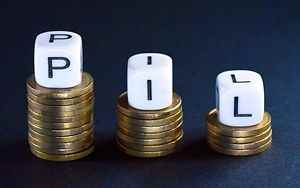(Finance) – “Today various indicators, starting with business confidence, predict a slowdown in the economy between the end of this year and the beginning of next, mainly due to the war in Ukraine. The change in GDP for 2022 is 3.9 per cent, but the final figure (in the annual national accounts) it should be slightly lower because there are three fewer working days this year than in 2021“.
This was reported by the President of the Parliamentary Budget Office, Lilia Cavallari, during a hearing to the House and Senate budget committees on the manoeuvre. According to PBO estimates, he added, “in the fourth quarter, GDP will slow down in cyclical terms and overall growth in 2022 will be close to the government’s target, if not slightly above it”.
“In comparison with the expectations of institutions and private analysts, the Government’s programmatic scenario on GDP can therefore be shared for 2022 while it is in the high range of estimates for the next few years” stated Cavallari, underlining that “these forecasts are in any case affected by risks of various kinds, such as the developments of the war in Ukraine and the possible resurgence of the pandemic, to which is added the danger that energy inflation and the shortage of some materials could jeopardize the implementation of the PNRR”. As already underlined for the revision of the NADEF, the Parliamentary Budget Office “confirms a positive assessment of the commitment, reaffirmed with the maneuver, to reduce the ratio between public debt and GDP, thanks also to a planned return of the deficit to 3 per cent percent of the product in 2025”.
The extension of the flat-rate scheme to 85 thousand euros “involves a rather small number of taxpayers, but still poses equity problems within the same category as the self-employedwho are subjected to a heterogeneous treatment not justified by reasons of ability to pay” while the coexistence with the Irpef regime, “to which employees and pensioners continue to be subjected, generates imbalances on the basis of the principles of horizontal levy equity”, the president of the Parliamentary Budget Office pointed out again. for more than 77 percent to the 10 percent of taxpayers with the highest earned income. This means that the further extension of the regime involves today predominantly the richest taxpayers”. For these subjects, the PBO notes, the gain with respect to the progressive tax “is generally very high: lhalf of them save more than 7,500 euros in personal income tax and a quarter more than 9,500″. Finally, “raising the limit creates a limited incentive to raise revenues and compensation, but determines a strong disincentive to growth, since when the threshold is exceeded, all income is subjected to ordinary taxation”.
As for the repeated adoption of tax amnesties, it risks “to damage both the efficiency of the collection system and the relationship with taxpayers, who could be induced not to pay taxes pending future amnesties” while “not rigorous policies in the fight against evasion risk jeopardizing the achievement of some objectives set by the PNRR”. This was underlined by the president of the Parliamentary Budget Office, Lilia Cavallari, during a hearing to the budget commissions of the House and Senate on the manoeuvre. “Measures of this nature have already been approved in past years – recalls the PBO – and introduce elements, even temporary ones, which should be better placed within an organic reform of the tax assessment procedures, the sanctioning regime, the collection and management of the residual cargo warehouse”.
